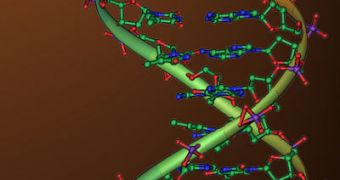Experts at the University of Illinois, in the United States, have recently announced the development of a new technique to cleave single-stranded DNA, using newly discovered deoxyribozymes (catalytic DNA). According to the team, the instrument exhibits the sequence-selectivity and the site-selectivity required of a practical catalyst, and may therefore prove to be a sustainable method of manipulating the notoriously hard-to-work-with human DNA.
“Our work suggests that deoxyribozymes have significant potential as sequence-specific DNA cleavage reagents. The hope is that we can take this fundamental advance and develop the ability to use DNA as a practical catalyst to cleave double-stranded DNA,” UI Chemistry Professor Scott Silverman says. Details of the new method, on which postdoctoral research associate Madhavaiah Chandra and graduate student Amit Sachdeva also worked, were accepted for publication in press in an upcoming issue of the journal Nature Chemical Biology, and already appear online on the publication's website.
The new discovery came somewhat by accident, the team say. Their efforts were not focused on finding a compound that could cleave single-stranded DNA, but on uncovering artificial sequences of DNA that could cleave proteins. However, they found that the new material functioned in very much the same way restrictive enzymes did. These enzymes allow experts to cut and paste portions of double-stranded DNA, which is the basic tool of molecular biology today. Their main drawback is that they only have a limited number of DNA sequences they can cut, which makes them useful only to a certain point.
“We can [now] target a particular sequence, and we know we will cut at only one site within that sequence. By appropriately picking the recognition and enzyme regions of the catalyst, we should be able to cut many more DNA sequences than is possible with current restriction enzymes,” Silverman explains. The team reveals that the new catalyst makes good use of two metallic ions – manganese and zinc – without which it cannot function.
This is “intriguing, because many natural protein-based nucleases (which cleave DNA) similarly require two metal ions. One or both of the metals are presumably involved in the chemical mechanism by which our DNA catalyst achieves hydrolysis of the DNA backbone,” the expert goes on. But, in order for the reaction between the DNA and the catalyst to occur, a molecule of water is necessarily needed. All the molecules then have to be arranged very precisely in a 3D structure, which maximizes the chances for success.
“So far, we have achieved cleavage of single-stranded DNA targets. The next big step is to cleave double-stranded DNA targets,” Silverman says. The work was funded by the National Institutes of Health (NIH), the Defense Threat Reduction Agency, and the David and Lucile Packard Foundation.

 14 DAY TRIAL //
14 DAY TRIAL //